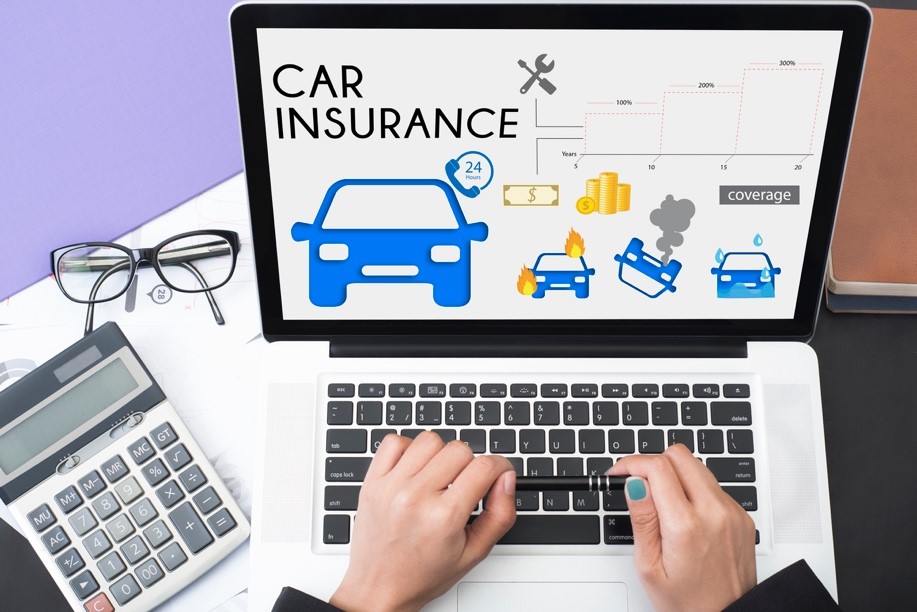Choosing the right car insurance is essential for protecting yourself, your vehicle, and others on the road. With so many options available in the market, finding the right policy can seem overwhelming. However, understanding your specific needs, coverage options, and budget can help you make an informed decision. In this article, we will guide you through the process of selecting the best car insurance that fits your lifestyle and driving habits. From liability coverage to comprehensive plans, we will explore the types of insurance available and key factors to consider before purchasing. Let’s dive into how you can choose the right car insurance for your needs.
Understand the Types of Car Insurance Coverage
The first step in choosing the right car insurance is to understand the different types of coverage available. Car insurance typically offers several options, each providing varying levels of protection. The most common types of coverage include:

- Liability Insurance: This is the most basic and essential form of insurance, often required by law in many regions. It covers the damages and medical expenses of others if you’re at fault in an accident. It includes bodily injury liability and property damage liability.
- Collision Coverage: This type of insurance covers the cost of repairs to your own vehicle if you’re involved in an accident, regardless of fault. It is especially useful if you have a newer or high-value vehicle.
- Comprehensive Coverage: Comprehensive insurance covers damages to your car not caused by a collision, such as theft, vandalism, natural disasters, or animal strikes. This type of coverage provides all-around protection for your vehicle.
- Uninsured/Underinsured Motorist Coverage: This covers you if you’re involved in an accident with a driver who doesn’t have insurance or enough coverage to pay for the damages. It’s an important safeguard for protection against uninsured drivers.
- Personal Injury Protection (PIP): PIP covers medical expenses, lost wages, and other costs if you or your passengers are injured in an accident, regardless of who is at fault.
By understanding these basic coverages, you can determine which options are most relevant for your driving situation.
Assess Your Coverage Needs Based on Your Situation
Not all drivers require the same level of coverage. Several factors can influence the type of car insurance you need. Here are some things to consider:
- Your Vehicle’s Age and Value: If you own a newer or high-value car, comprehensive and collision coverage might be necessary to protect against expensive repairs or replacement costs. On the other hand, if your vehicle is older or has a low market value, you might choose a more basic policy with liability coverage and skip comprehensive or collision coverage.
- Your Driving Habits: If you spend a lot of time on the road, commuting long distances or driving in high-traffic areas, having a more extensive insurance policy is a wise choice. Those who rarely drive or only use their vehicle for short trips may find that a basic liability plan suffices.
- Personal Risk Tolerance: Consider how much financial risk you’re willing to take on. Opting for higher deductibles can lower your premium but may require you to pay more out-of-pocket in case of a claim. If you’re not comfortable with the potential out-of-pocket expenses, you may want to choose a policy with lower deductibles and higher premiums for peace of mind.
- Legal Requirements: Different states and countries have varying requirements for minimum car insurance coverage. Be sure to check the local laws to ensure you meet the legal insurance requirements where you live.
By evaluating your specific situation, including the type of vehicle you drive, how much you use it, and your legal obligations, you can make a decision that fits both your needs and your budget.
Compare Insurance Providers and Plans
Once you have a clear understanding of the coverage types and your needs, it’s time to shop around for the best deal. Comparing car insurance providers is essential to find the best policy for your situation. Here are some tips to help you compare effectively:
- Get Multiple Quotes: Don’t settle for the first quote you receive. Request quotes from multiple insurance companies to get a sense of pricing and coverage options. Many insurers offer online tools that allow you to compare quotes quickly and easily.
- Consider Customer Service: Insurance is not just about the price; it’s also about the service you receive. Check reviews and ratings of insurance providers, paying attention to their customer service quality, claim handling processes, and response times.
- Discounts and Bundling: Many insurers offer discounts for safe driving, multiple vehicles, or bundling auto insurance with other types of insurance, such as home or renters insurance. Ask about available discounts to save money on your premiums.
- Evaluate Financial Stability: The financial stability of the insurance company is essential to ensure that they can pay out claims when needed. Look for insurers with high ratings from agencies like A.M. Best or Standard & Poor’s to gauge their financial strength.
Review the Terms and Conditions Carefully
Before committing to a car insurance policy, make sure you understand the terms and conditions of the coverage. Pay close attention to the following:

- Exclusions and Limitations: Understand what is and isn’t covered by the policy. Many car insurance policies have exclusions or limitations, such as damage caused by driving under the influence of alcohol or drugs, or damage resulting from natural disasters.
- Deductibles: Review the deductible amounts for each coverage type. The deductible is the amount you must pay out of pocket before your insurance kicks in. Consider how much you can afford to pay in case of a claim.
- Policy Limits: Ensure that the policy limits meet your needs. The limit is the maximum amount an insurer will pay for a claim. It’s crucial to have coverage limits that are high enough to protect your assets in the event of a serious accident.
- Claim Process: Understand the insurance company’s claims process, how long it typically takes to settle a claim, and whether they provide 24/7 customer support for emergencies.
Take Advantage of Technology
With the rise of digital tools, many car insurance companies now offer mobile apps and online portals that allow you to manage your policy, track claims, and make payments easily. Some insurers also offer telematics or usage-based insurance (UBI), where your premium is based on your driving behavior, such as how often you drive and how safely you drive. If you’re a cautious driver, this type of insurance could help you save money.
Conclusion
Choosing the right car insurance policy is a vital step in protecting yourself and your vehicle. By understanding the various types of coverage, assessing your needs, comparing quotes, and reviewing the terms of the policy, you can make an informed decision that offers you the best protection for your situation. Don’t forget to consider customer service and financial stability when choosing an insurer. The right car insurance will give you peace of mind, knowing that you’re covered in case of accidents, damage, or other unexpected events. Take the time to research and choose wisely—you’ll thank yourself if you ever need to file a claim.

Leave a Reply